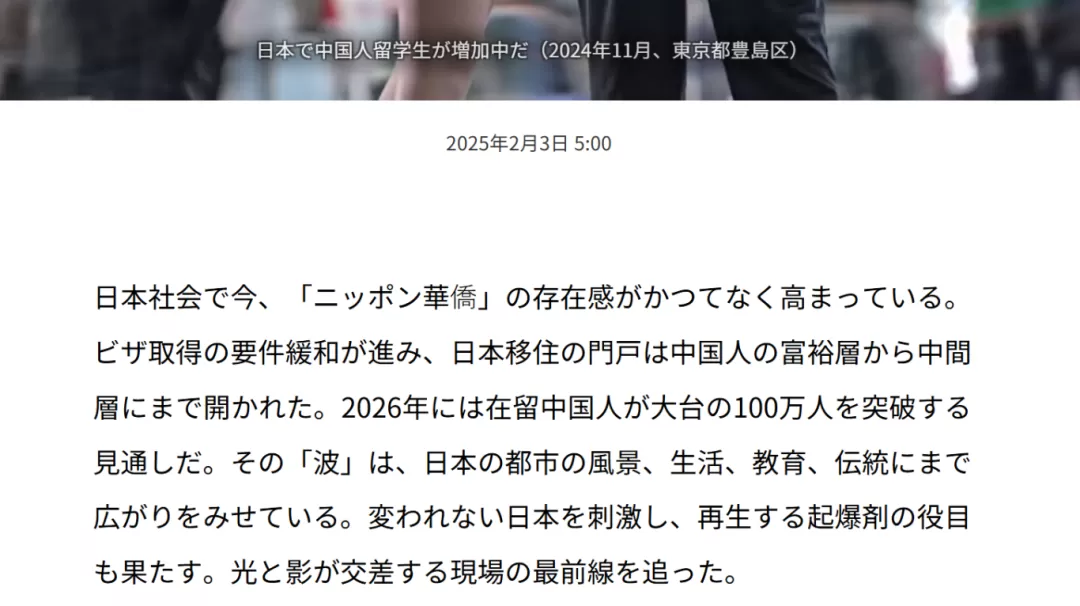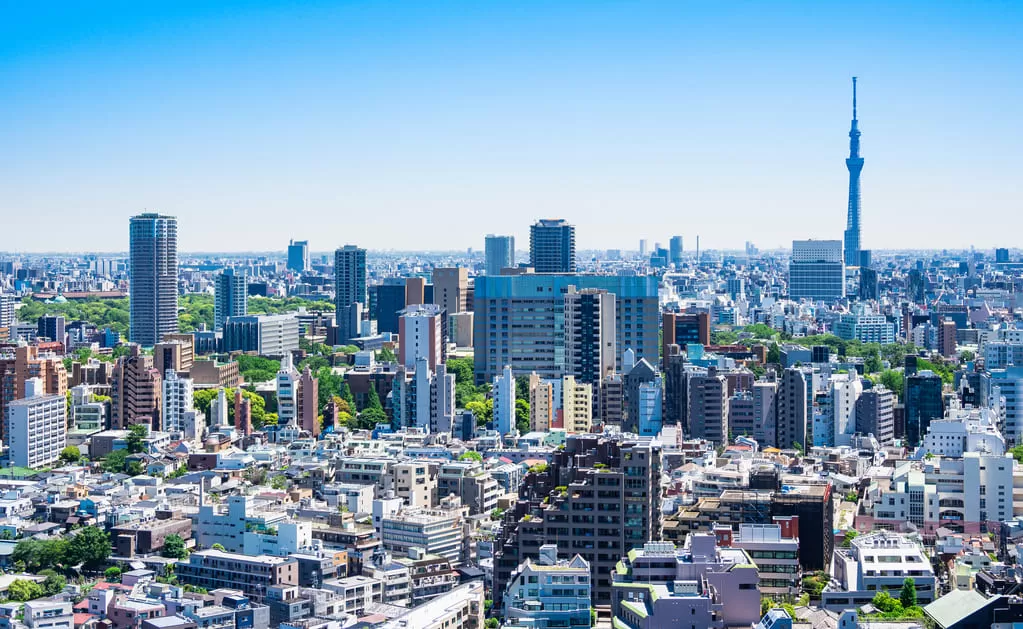
Corporate taxation is very different! In-depth comparison between Hong Kong and Mainland companies
2025-03-14
A must-see for Hong Kong stock investment, full of dry goods!
2025-03-21According to the latest data released by the Japan Immigration Bureau on March 14th. As of the end of last year.The number of foreigners residing in Japan has reached 3,768,977., an increase of 10.51 TP3T from the previous year and the third consecutive record year.
Japan.Step by step, it is becoming a major immigrant country.
In addition, a survey released by the Nihon Keizai Shimbun shows that Japan is opening its doors to the wealthy and middle class Chinese with the gradual liberalization of visa policies.
It is expected that by 2026, the total number of Chinese in Japan will exceed one million.

01
Chinese in Japan to exceed 1 million
According to data from the Immigration Bureau of Japan, due toGradual relaxation of policies such as the Highly Talented Person Visa and the Management Visa, and the increase in the number of Chinese students.Currently, there are more than 900,000 Chinese in Japan.
It is expected that by 2026, this figure will surpass the one million mark.

There are various reasons for Chinese people to migrate to Japan, such asGeographical proximity to China and Japan, similar language and culture, superior quality of life in Japan, relatively affordable housing prices, abundant job opportunities and good salaries, annual merit system in the workplace, quality education resources and a comprehensive medical system.etc.

02
Moving to Japan is full of opportunities
Career dividends from Chinese companies going overseas
in the wake ofGlobalization of Chinese tech companies accelerates, Huawei, ByteDance and other headline companies continue to expand their business footprint in Japan.
In 2023, Huawei's R&D center in Tokyo alone added 200 new positions, focusing on recruiting technical talents who are proficient in Chinese and Japanese bilingualism, and whose salary levels are generally 20%-30% higher than those of local Japanese companies.
Meanwhile.The cross-border e-commerce and travel services sectors are giving rise to new career opportunitiesAfter the entry into force of the RCEP agreement, the efficiency of cross-border logistics between China and Japan has improved, leading to a surge in demand for cross-border anchors, supply chain management and other "bridge-type" jobs.

Demand gap in an ageing society
Japan's deep aging (29% of the population over 65 years old) has created a huge market for rigid demand.
According to the Ministry of Health, Labour and Welfare's data for 2023, there is a shortage of 600,000 people in the elderly care industry, and foreign practitioners with the qualification of "nursing and welfare worker" have a starting salary of 280,000 yen per month (about 13,000 yuan), and the government has subsidized the cost of 70% training.
This field not only provides stable employment, but also generatesOpportunities for Innovation in the Silver Economy: Chinese companies are quickly cutting into the Japanese market, which is growing at an annual rate of 12%, with the cost advantage of smart senior living devices (e.g., AI companion robots).

Local cities' "manpower grabbing" policies
In response to the demographic crisis, local governments in Japan have launched strong talent attraction policies:
👉 Fukuoka City grants a subsidy of up to 1,000,000 yen (about 48,000 yen) to settling families, which is accompanied by free Japanese language lessons and job counseling;
👉 Hokkaido's Sapporo City offers 3-year property tax breaks to attract immigrants and activate the local economy.
👉 In rural areas, the "Empty House Bank" program offers unused traditional townhouses (kuminjas) to immigrants for free or at a low price, with the government bearing the cost of renovation of the 50%.
These policies not only reduce the cost of migration, but also transform the "demographic crisis" into an innovative experiment in "resource revitalization".

Japan Real Estate Investment Dividend
Japanese real estate is becoming a popular choice for Chinese investors for overseas allocation.The yen exchange rate is at a low level, the cost of admission is nearly 401 TP3T lower than it was 10 years ago.
Home prices in core cities are rising steadily, andTokyo and Osaka have seen cumulative increases of over 30% in the last 5 years, with rental returns generally reaching 4%-8%(far exceeding the 1%-2% level of first-tier cities in China).
layeringFreehold, no common area, low interest rate loans(1.5%-2.5%) and other policy advantages, forming the unique value of "low threshold holding + stable cash flow".

The shift from "tourism fever" to "settlement fever" is not only a result of geographic proximity, but also a result ofJapan in terms of quality of life, social welfare, career development, and investment prospectsand other aspects of the unique appeal to the Chinese.
If you are interested in moving to Japan, please feel free to contact us.


